Saturday Jan 03, 2026
Saturday Jan 03, 2026
Thursday, 8 February 2024 00:51 - - {{hitsCtrl.values.hits}}
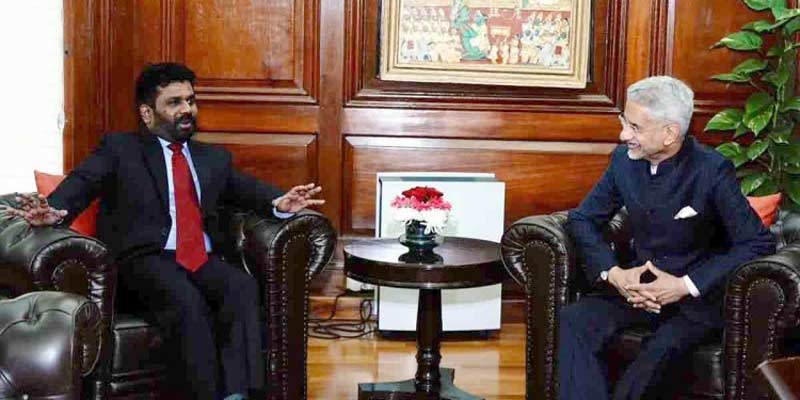
Anura arrives
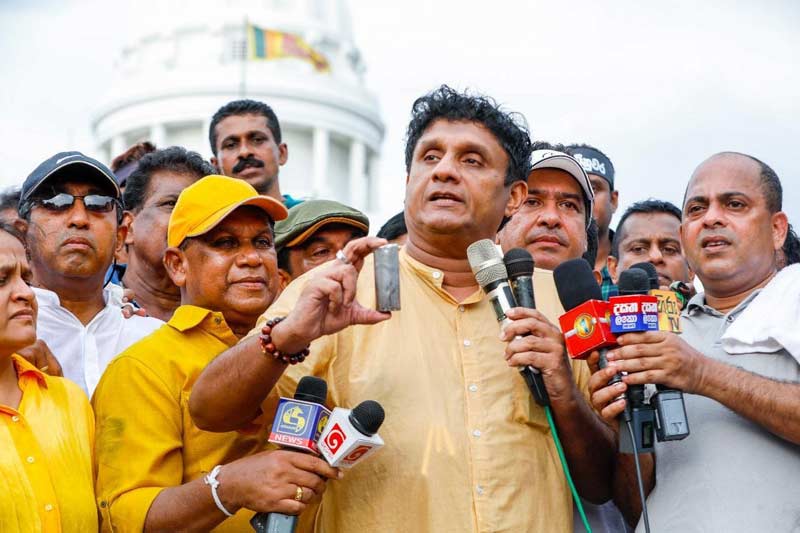
Resistance
“Our beautiful Motherland is indeed unfortunate. What we must do is to work to liberate it from the grasp of this oppressive ruling class. That is what citizens who really love the Motherland should do.”
- Cardinal Malcolm Ranjith, 76th Independence Day Mass -
https://www.youtube.com/watch?v=wdZpzIejUTM&t=407s
 Anura Kumara Dissanayake has arrived. The fact that he has arrived in Delhi is the most visible sign that he has arrived as a major player recognised at the big table. The Red leader is in the Green Room. Meera Srinivasan of The Hindu has it right when she called it “a significant outreach to the island nation’s most popular politician at the moment.” (Sri Lanka’s JVP-led alliance invited for talks in Delhi for the first time - The Hindu)
Anura Kumara Dissanayake has arrived. The fact that he has arrived in Delhi is the most visible sign that he has arrived as a major player recognised at the big table. The Red leader is in the Green Room. Meera Srinivasan of The Hindu has it right when she called it “a significant outreach to the island nation’s most popular politician at the moment.” (Sri Lanka’s JVP-led alliance invited for talks in Delhi for the first time - The Hindu)
In a purely formal sense, Anura and the JVP-NPP have just 3 seats in Parliament and 3% of the vote. The Indian state usually doesn’t extend an official invitation to, and its Minister of External Affairs and the PM’s National Security Advisor don’t meet with, anyone of that de jure status who is not even Opposition Leader. It is more striking when it is the leader of a Marxist party.
Anura’s achievement is therefore all the greater and more creditable, because it is recognition by the regional power of his and his party’s de facto status.
It was impressively unorthodox agility by Delhi, recognising and jumping on the emerging reality; stealing a march over China; capitalising on the facts that Beijing couldn’t be seen to be the first to invite Anura just as he couldn’t be seen to make China his first ‘official’ visit.
India is trying to ensure, especially after the Maldivian turnaround, that a possible victory by Anura Dissanayake is not simultaneously a victory for China. In doing so, India is also safeguarding the interests of the Quad.
By ushering Anura and the JVP-NPP into the South Asian mainstream under its umbrella, Delhi may have just shielded him, the NPP and Sri Lankan democracy itself from a Senegal-Pakistan-Myanmar-type endgame at the hands of a decrepit elitist Establishment.
The 5-day, multi-city passage to India by Anura Dissanayake, Vijitha Herath, Dr. Nihal Abeysinghe and Prof Anil Jayantha of the JVP-NPP; the photograph of Anura’s substantive meeting with Dr Jaishankar; the latter’s expressive X; and Anura’s and Vijitha Herath’s meeting with National Security Advisor Ajith Doval, shatter the SJB’s patronising superciliousness (“North Korea”) and smugness (“only we have international acceptance, only we have a team that can work with the world”).
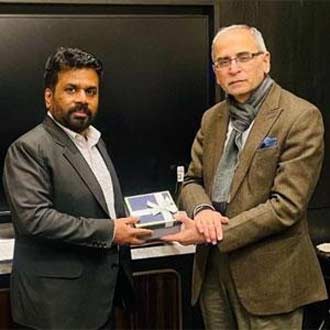 |
| AKD with India’s Foreign Secretary |
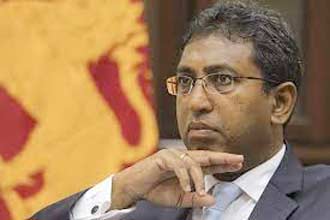 |
| No social democracy, no Premadasa
|
Sajith/SJB comeback
Sajith and the SJB made a comeback with the dynamic demonstration of January 30th and the gratuitous brutality of the regime’s crackdown which included a tear-gas attack that affected children at the Public Library.
The attack was at a venue which had not been prohibited by a magistrate. Overhead footage showed a three-line blocking formation by the state: Police including riot police in full gear, the STF and the military. Water-cannon jets and teargassing commenced unprovoked. The victims included the Leader of the Opposition.
The assault was on the main Opposition party, the SJB, which is a moderate, centrist formation. It was headed by the Opposition Leader, MPs and other elected representatives. When the moderate Opposition is drenched by water-cannon, teargassed and baton-charged, with the footage featured prominently on Al Jazeera news, the global impression is hardly glowing but grimly accurate.
As the drenched, tear-gassed SJB demonstrators gathered around a makeshift platform on a vehicle, the party had metamorphosed from one which contained elements sympathetic to Wickremesinghe their (very) old leader, to one that was a fully-charged democratic Opposition; incensed and ready to resist.
Ranil deployed kinetic force against a party which until that moment was ambiguous in its attitude and uncharacterised by sharp antipathy towards him. He now has four fronts and three leaders against him: JVP-NPP, SJB, FSP-IUSF, civil society; Anura Dissanayake, Sajith Premadasa, Kumar Gunaratnam.
Town Hall-Vihara Maha Devi Park, January 30th 2024 was the place and time that the SJB got back on the oppositional track and Sajith snapped-back into his role as challenger for the presidency.
This in no way means that Sajith and/or the SJB got ahead of the competition. The SJB’s social discourse is still very ‘thin’; a far cry indeed from Ranasinghe Premadasa’s. In contradistinction to the SJB, Anura and the JVP-NPP have a powerful anti-establishment critique, a robust social call (centrally to women) and an energising national project. (https://youtu.be/5z9irx0Vz4g?si=5YiZ_I1qZjCpbR6z).
Harshanomics handicap
The SJB’s discourse and profile continue to be skewed by Dr. Harsha de Silva in a manner that implicates the SJB with the policies of Ranil’s UNP and a discredited, moribund elitist Establishment. This is exceedingly disadvantageous to Sajith and his party in their competition with Anura and the NPP. Sajith lost in November 2019 because of insufficient distance from Ranil (unlike his father from JR’s UNP in 1988).
Dr de Silva spoke at excessive length at the Advocata Economic Freedom symposium on ‘A Wealthy Country’ (https://www.youtube.com/watch?v=GXRyx-IhO-Q&t=1s). He declared that his Economic Blueprint was “the economic perspective of the SJB” and defined that perspective as a “social market economy”—which means the SJB shares Ranil’s decades-old economic ideology downloaded from German Christian Democracy through the center-right International Democratic Union (IDU). Harsha made no mention of Social Democracy (as does Sajith) nor of President Premadasa. There was a fleeting mention of Sajith.
Growth spikes were noted by him (e.g., 8.2% in 1968) without the slightest reflection of why they weren’t sustained—such as the facts that government was tossed out, or rebellion erupted, because of the lopsided growth model.
Harsha dated the ‘downfall’ as beginning in 2004, not 1994 as he had earlier insisted. The facts however show that the 2004-2009 and 2010-2015 administrations of Mahinda Rajapaksa, comprising the two-term MR decade 2005-2015 showed a far better economic performance than the UNP of 2001-2004 and 2015-2019.
Pre-election, in mid-2024, when the challenge of the knotty ISB issue looms larger, Ranil, the UNP and the SJB compromised by Harsha who defends the unconscionable resort in 2015-2019 to the private money-markets, will be vulnerable to attack by Anura’s NPP and the FPC’s Dullas-Charitha faction.
Harsha and Eran have never worked with a leader who achieved anything tangible in terms of economic development. I have. They should embrace the economic philosophy that drove spectacular developmental success:
 “If economic thinking…cannot get beyond its vast abstraction, the national income, the rate of growth, output ratio, input-output analysis, labour mobility, capital accumulation, if it cannot get beyond all this and make contact with the human relation of poverty, frustration, alienation, despair, breakdown, crime, escapism, stress, congestion, ugliness, and spiritual death, then let us scrap economics and start afresh.”
“If economic thinking…cannot get beyond its vast abstraction, the national income, the rate of growth, output ratio, input-output analysis, labour mobility, capital accumulation, if it cannot get beyond all this and make contact with the human relation of poverty, frustration, alienation, despair, breakdown, crime, escapism, stress, congestion, ugliness, and spiritual death, then let us scrap economics and start afresh.”
(The Time for Action, R. Premadasa, 1980, p119)
 “Doubters and shouters proclaimed our entire economy would crash…I was encouraged by only one fact. Our people wanted it. Why did they want it? They wanted it because they had seen governments come and government go—but poverty remains. They wanted it because of their experience. Our people at the poorest level are not theorists. They are not so-called international economists…They just know the humiliation of poverty…We must never forget one basic truth of development…[there] is no substitute for the wisdom of poor people.”
“Doubters and shouters proclaimed our entire economy would crash…I was encouraged by only one fact. Our people wanted it. Why did they want it? They wanted it because they had seen governments come and government go—but poverty remains. They wanted it because of their experience. Our people at the poorest level are not theorists. They are not so-called international economists…They just know the humiliation of poverty…We must never forget one basic truth of development…[there] is no substitute for the wisdom of poor people.”
(Janasaviya Trust Fund Inauguration 1991, President Premadasa: Vision & Mission, p 153)
Establishment and emancipation
The three major political projects and brands which dominated the island’s post-Independence politics-- the UNP, SLFP and SLPP—are dying. Whoever their candidate/s, whatever their kaleidoscopic political permutations and combinations, all these parties will almost certainly be eliminated at the forthcoming presidential and parliamentary elections.
 The SLFP was destroyed by its alliance with Ranil (2015), authored by Chandrika.
The SLFP was destroyed by its alliance with Ranil (2015), authored by Chandrika.
 The SLPP was sunk, not by the Aragalaya but by Gotabaya’s crazy economics which crushed the SLPP’s traditional rural base with its fertiliser ban and killed citizens in their kitchens with exploding gas-cylinders.
The SLPP was sunk, not by the Aragalaya but by Gotabaya’s crazy economics which crushed the SLPP’s traditional rural base with its fertiliser ban and killed citizens in their kitchens with exploding gas-cylinders.
 What remained of the SLPP’s base was destroyed by its post-Aragalaya option for Ranil instead of Dullas.
What remained of the SLPP’s base was destroyed by its post-Aragalaya option for Ranil instead of Dullas.
 The UNP was ravaged by quarter-century of leadership by Ranil.
The UNP was ravaged by quarter-century of leadership by Ranil.
The only survivors of the SLFP-SLPP tradition will be those who partner the two main contenders for the presidency and parliamentary power – Sajith/SJB and Anura/JVP-NPP. Even that’s problematic because voters may eliminate those elements in the preferential voting. Only a handful will survive the coming electoral ‘Bonfire of the Vanities’. If an election is not held on schedule, the bonfire that consumes the UNP-SLFP-SLPP establishment will not be merely metaphorical.
The Sri Lankan political Establishment, the ancien regime, was undermined and is being overthrown by a ‘two-stage revolution’ as in 1956. Then it was the Hartal 1953 and SWRD 1956. Now it is from and by the Left: the first stage was the Aragalaya 2022, the spearpoint of which was the Inter-University Students Federation (IUSF) influenced/guided by the Frontline Socialist Party (FSP), the radical breakaway from the JVP, and the second stage is the electoral surge of the JVP-NPP itself led by Anura Dissanayake.
The assurance Ranil self-professedly gave AKD about the presidential election could be to keep the JVP-NPP off the streets while a privatisation/foreignisation offensive targets the economy’s commanding heights.
The SJB’s pitch is that the voters shouldn’t opt for populist anti-establishment change, which gave them Gotabaya Rajapaksa. The voters made the worst possible choice in 2019. They’d have been much better off with Sajith. However, Sajith didn’t represent change sufficiently – and as much as he could have--in 2019 because he didn’t rupture with Ranil as his father did from JR and the UNP establishment in 1988.
The problem in 2019 was not that the voters were too radical-populist; it is that they were not radical-populist enough. Neoconservative Gotabaya was a member of the Rajapaksa family and hardly represented rupture. His Trump-Netanyahu ideology and worldview were Neanderthal.
Anura Dissanayake and the JVP-NPP represent real change. Sajith could too, if he represents his father’s progressive project rather than his technocrats’ conservative blueprint.
Crisis of interregnum
Ranil Wickremesinghe shoved through the Online Safety bill without bringing it into line with the strictures and suggestions of the Supreme Court. He is pushing the draconian Anti-Terrorism Act. He is aggressively confrontational towards the Constitutional Council. As Dullas Alahapperuma accuses in a stinging denunciation, Wickremesinghe is seeking to centralise all power in his hands. He probably hasn’t made his mind whether or not to try a Sinhalese version of the Senegalese ‘postponement’ of the presidential election.
Around a half-century ago I had begun reading Antonio Gramsci at the same time I was reading the fiction of John Fowles, and found the great Italian thinker’s most famous line printed on the fly-leaf of one of the novels by Fowles I was reading which was either The Magus or Daniel Martin. The legendary line was:
The crisis consists precisely in the fact that the old is dying and the new cannot be born; in this interregnum a great variety of morbid symptoms appear.”- Antonio Gramsci, Prison Notebooks (1930)
Philosopher Slavoj Zizek provides a pithier translation:
 “The old world is dying and the new world struggles to be born. Now is the time of monsters.”
“The old world is dying and the new world struggles to be born. Now is the time of monsters.”
That is the crux of the Sri Lankan crisis. The established parties which wielded power since Independence are dying but the new parties are as yet unable to assume leadership of the country because an election is yet to be held.
Gramsci defines ‘the interregnum’ as a period similar to our own current one until elections are held:

“…the interregnum, the crisis whose historically normal solution is blocked in this way…”
Gramsci goes on to describe a situation of the type that we in Sri Lanka are experiencing:
 “If the ruling class has lost its consensus, i.e. is no longer ‘leading’ but only ‘dominant’, exercising coercive force alone, this means precisely that the great masses have become detached from their traditional ideologies, and no longer believe what they used to believe previously, etc.”
“If the ruling class has lost its consensus, i.e. is no longer ‘leading’ but only ‘dominant’, exercising coercive force alone, this means precisely that the great masses have become detached from their traditional ideologies, and no longer believe what they used to believe previously, etc.”
Certainly, it seems that the great majority of the Sri Lankan masses have become detached from their traditional ideologies and political beliefs. This is why President Wickremesinghe de-funded the scheduled local authorities’ election. Gramsci’s term ‘interregnum’ echoes a definition by Karl Marx analysing the dramatic history of France and identifying a period in which one social force is obsolete but the other cannot yet take over its role:
 “a time when the bourgeoisie had already lost, and the working class had not yet acquired, the faculty of ruling the nation.”
“a time when the bourgeoisie had already lost, and the working class had not yet acquired, the faculty of ruling the nation.”
In Sri Lanka, the parties of the old political establishment, represented by its most ‘organic’ representative Ranil Wickremesinghe “have already lost” majority support and popular legitimacy, but the Opposition with its two strands, the SJB and the NPP, “have not yet acquired” the faculty or even the opportunity “of ruling the nation”.
From a systemic perspective, the most dangerous scenario is one in which the three traditional political forces are dying, while the transition to the emerging democratic forces is blocked by a pause/postponement of the scheduled presidential election. This worst-case would be one in which the Wickremesinghe regime maintains itself with no legitimacy atop a pedestal with an exceedingly narrow social base by “exercising coercive force alone” (Gramsci). That’s “a time of monsters”.
US strikes, Che’s strategy
The strikes using B-1 heavy-bombers flying out of America on targets deemed Iranian Revolutionary Guard assets in Iraq and Syria, as well as battle carrier-launched US-UK attacks on Yemen, confirm the scenario predicted months ago in this column, of a widening regional conflict.
The US military presence in Iraq is a residue of a massive invasion in 2003 on the basis of a Big Lie, i.e., Saddam’s WMD. The result has been a Shiite Iraqi administration more open to Iranian influence than ever and dependent on pro-Iranian Iraqi militias turned official paramilitaries which have political parties attached. US strikes may catalyse a process in which political power in Iraq incrementally shifts to the more radical/militant wing of Iraqi politics. The pro-Iranian militia currently targeted by the US aren’t going anywhere. They are Iraqi and Syrian, and were born and live there. The ferocious Israeli army cannot eradicate Hamas after waging total war for four months in the narrow Gaza strip. The US cannot prevail in the Middle East because time, terrain and popular sentiment are on the side of the militias belonging to the Axis of Resistance supported by Iran. US-UK bombing is seen as covering fire for the IDF’s genocidal Gaza campaign which is now slouching to Rafah.
Che Guevara’s grand strategy consisted of multiple foci (‘focos’) of anti-imperialist guerrilla columns which would create a giant quagmire and wage protracted war without borders. Che’s vision didn’t work in one region, Latin America, but may now come true in another, the Middle East, with a more emotive cause (Israel/Palestine) and deeper civilizational roots (Arab and Islamic).
American overstretch is also classifiable under my (Gramscian) category of a ‘crisis of interregnum’: the long, conflict-riven transitional interregnum between the post-Cold War unipolar hegemonic order and the emergent multipolar world order.
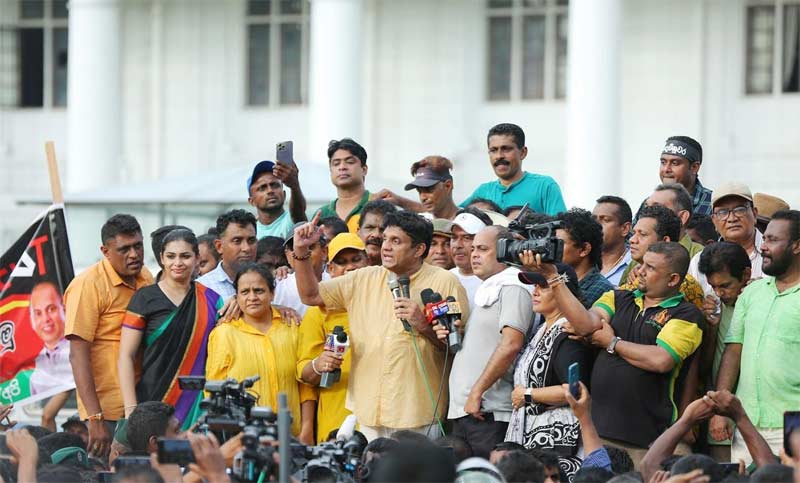
Sajith: Back on the block
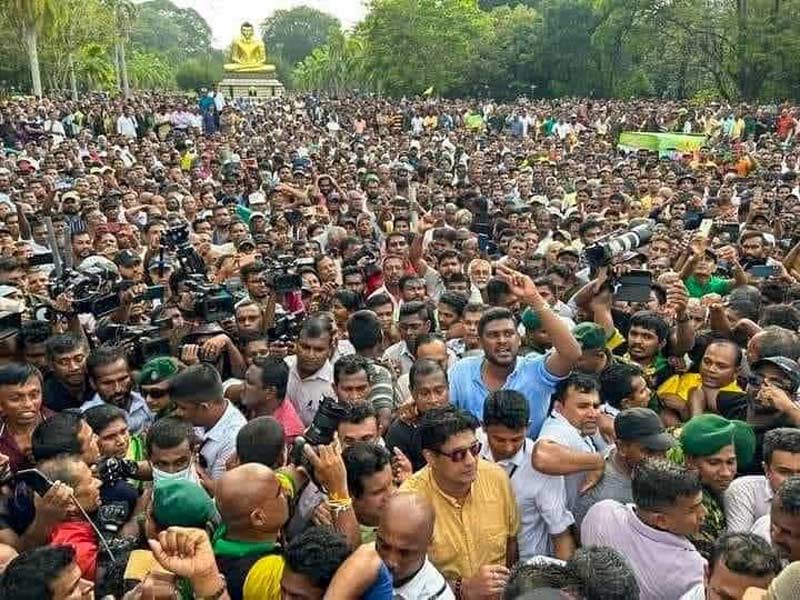
SJB in contention
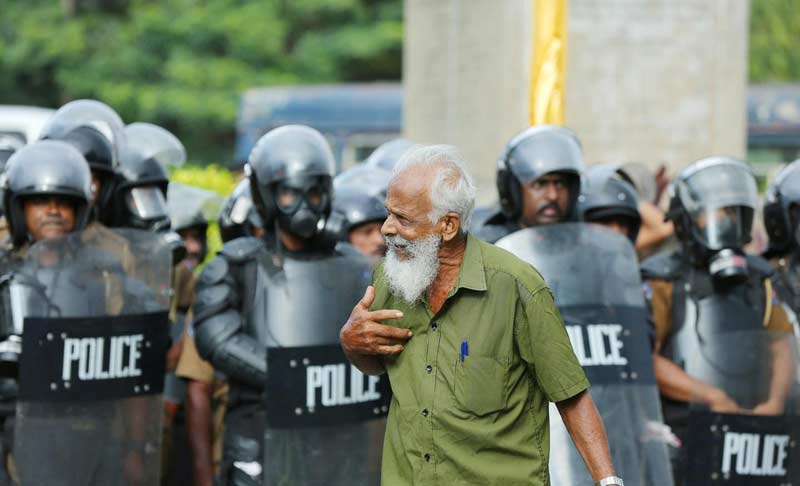
Ranil’s intolerance